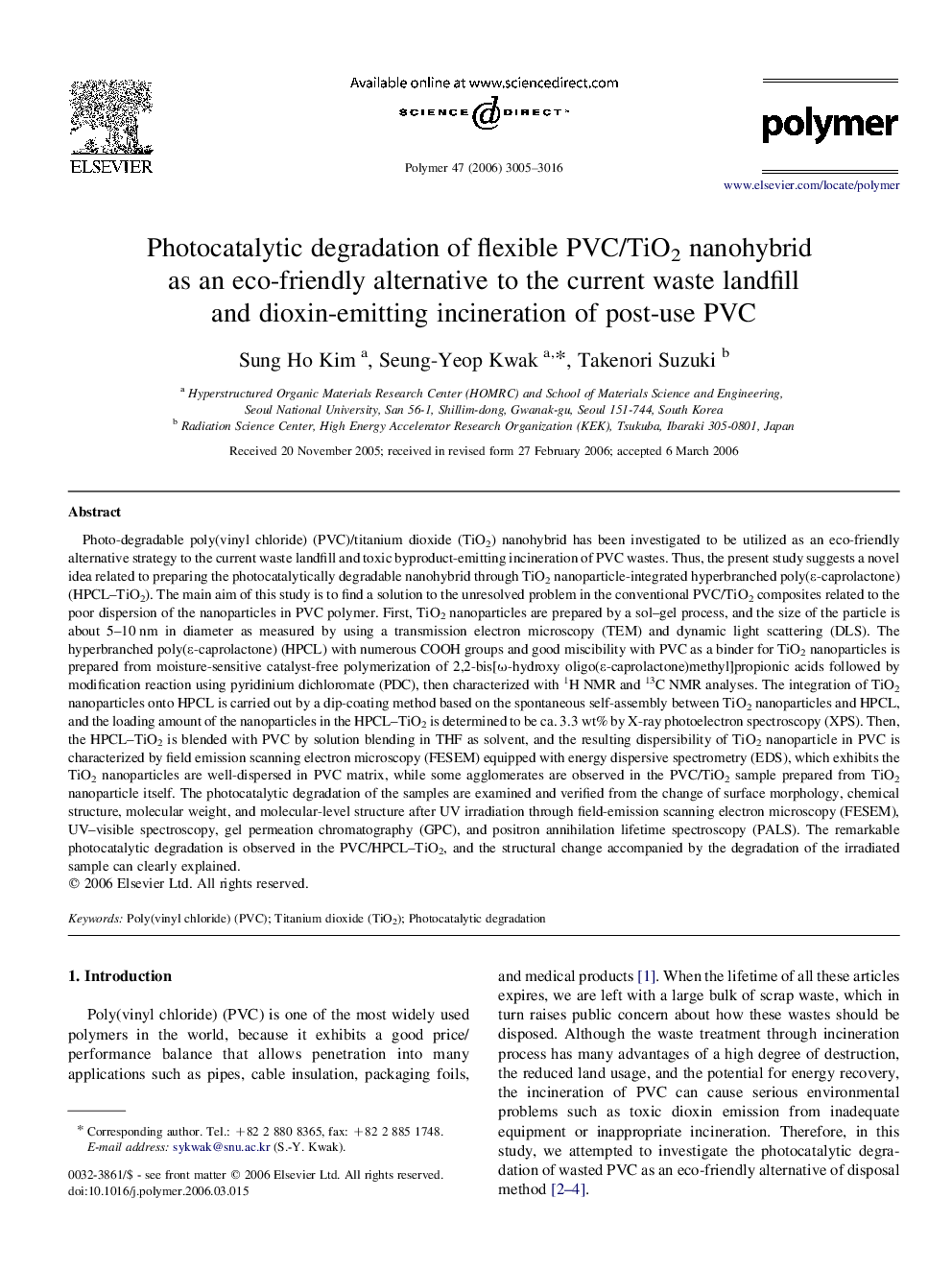| کد مقاله | کد نشریه | سال انتشار | مقاله انگلیسی | نسخه تمام متن |
|---|---|---|---|---|
| 5186347 | 1381102 | 2006 | 12 صفحه PDF | دانلود رایگان |

Photo-degradable poly(vinyl chloride) (PVC)/titanium dioxide (TiO2) nanohybrid has been investigated to be utilized as an eco-friendly alternative strategy to the current waste landfill and toxic byproduct-emitting incineration of PVC wastes. Thus, the present study suggests a novel idea related to preparing the photocatalytically degradable nanohybrid through TiO2 nanoparticle-integrated hyperbranched poly(ε-caprolactone) (HPCL-TiO2). The main aim of this study is to find a solution to the unresolved problem in the conventional PVC/TiO2 composites related to the poor dispersion of the nanoparticles in PVC polymer. First, TiO2 nanoparticles are prepared by a sol-gel process, and the size of the particle is about 5-10 nm in diameter as measured by using a transmission electron microscopy (TEM) and dynamic light scattering (DLS). The hyperbranched poly(ε-caprolactone) (HPCL) with numerous COOH groups and good miscibility with PVC as a binder for TiO2 nanoparticles is prepared from moisture-sensitive catalyst-free polymerization of 2,2-bis[Ï-hydroxy oligo(ε-caprolactone)methyl]propionic acids followed by modification reaction using pyridinium dichloromate (PDC), then characterized with 1H NMR and 13C NMR analyses. The integration of TiO2 nanoparticles onto HPCL is carried out by a dip-coating method based on the spontaneous self-assembly between TiO2 nanoparticles and HPCL, and the loading amount of the nanoparticles in the HPCL-TiO2 is determined to be ca. 3.3 wt% by X-ray photoelectron spectroscopy (XPS). Then, the HPCL-TiO2 is blended with PVC by solution blending in THF as solvent, and the resulting dispersibility of TiO2 nanoparticle in PVC is characterized by field emission scanning electron microscopy (FESEM) equipped with energy dispersive spectrometry (EDS), which exhibits the TiO2 nanoparticles are well-dispersed in PVC matrix, while some agglomerates are observed in the PVC/TiO2 sample prepared from TiO2 nanoparticle itself. The photocatalytic degradation of the samples are examined and verified from the change of surface morphology, chemical structure, molecular weight, and molecular-level structure after UV irradiation through field-emission scanning electron microscopy (FESEM), UV-visible spectroscopy, gel permeation chromatography (GPC), and positron annihilation lifetime spectroscopy (PALS). The remarkable photocatalytic degradation is observed in the PVC/HPCL-TiO2, and the structural change accompanied by the degradation of the irradiated sample can clearly explained.
Journal: Polymer - Volume 47, Issue 9, 19 April 2006, Pages 3005-3016